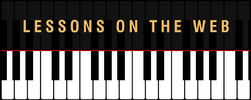|
This month we have been learning different ways to work on the challenges that we all have with playing successfully with both hands together at the same time on the piano. Honestly speaking, this is an ongoing “thing” for pianists at all levels of playing - mainly because our music gets more advanced as we learn more on the piano and we’re playing much more complex rhythms, melodies, and chords that are independent in each hand. Here’s a quick review of what we’ve covered so far.
Each of the links above takes you to the written blog and in each blog are at least two videos that show you what we talk about in the lesson, at the piano – so you can play through them with me. This final week we’re going to go over the best ways for you to put all of these steps together in your practicing to have the best success and also include some tips that will answer most of any questions that you may have as you really dig into this type of work. Developing a good practice routine that will target your two – handed playing is really important to help you achieve the best success. This first video lesson provides you with five specific levels to advance through that will pace your practicing and gear it towards coordinating your two handed playing through the easiest material to more advanced exercises and pieces.
Make sure to go through this video and each level one at a time to really get the most benefit from this specific practice plan. Remember to dedicate daily time to this to see the best results. Now let’s look at what you need to do when you have worked really hard on your scales, exercises and easier pieces, yet you’re still really having a hard time getting both hands to work together correctly in a more advanced piece. If you’re stuck in a particular piece and just can’t seem to get your hands to play the right notes and rhythms together – correctly…try these tips to get you over this little speed bump.
Use this video and lesson to help you anytime you are struggling with your two-handed playing even after practicing through the different levels in the first video. Be patient with yourself as we are always learning and always correcting things in our playing. It’s just part of the process. The key is learning the best way to overcome our different challenges so that we can play what we want to and how we want to, on our piano.
If you like my tips and lessons, you will love the courses over on my website. Whether you are a beginner looking to get a solid foundation to build on or you are looking to take you existing skills to that next level, the online music courses on my website - https://www.pianolessonsontheweb.com will help you do just that. |
AuthorMost blogs written by Archives
June 2020
Categories
All
|

 RSS Feed
RSS Feed